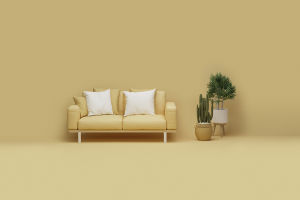Modern sofa design has long transcended its focus on comfort, evolving into a balanced embodiment of artistic expression and functionality. As a vital element in residential and commercial spaces, modern sofas reflect shifts in aesthetics, technological advancements, and evolving lifestyles.
From innovative materials to diverse forms, this article explores six key aspects: design features, functionality, material selection, color coordination, spatial integration, and future trends.
1. Design Features
One hallmark of modern sofa design is minimalism, characterized by clean lines, subdued color palettes, and functionality-focused concepts. This style aligns with contemporary desires for simplicity in life.
However, minimalism is not synonymous with monotony. Designers often introduce unique curves, geometric shapes, or asymmetrical elements, infusing personality into simplicity. Additionally, innovations such as multifunctional and modular sofas cater to varied consumer needs, accommodating the complexities of modern lifestyles.
2. Functionality
Functionality in modern sofa design emphasizes versatility. A sofa is no longer just for sitting; it may also feature built-in storage, adjustable backrests, and armrests, or integrated charging ports and audio systems.
Multifunctional sofas, particularly those designed for compact homes, have become go-to solutions for maximizing space. For instance, sofa beds double as sleeping surfaces when needed, while modular sofas can be reconfigured to adapt to changing spatial requirements, offering unmatched flexibility.
3. Material Selection
Diversity and eco-friendliness are key priorities in material choices for modern sofas.
Common upholstery materials include premium cotton, linen, performance fabrics, genuine leather, and faux leather, all of which balance tactile appeal with durability and ease of maintenance. Fillings are also increasingly eco-conscious, incorporating recyclable materials or high-density foam for enhanced health and environmental benefits.
4. Color Coordination
Color is a crucial element in sofa design. Modern sofas often feature neutral tones like gray, beige, and brown, creating a warm and calming ambiance.
Simultaneously, designers embrace bold contrasts by incorporating vibrant hues such as yellow, orange, or teal, injecting energy into spaces. Trending designs also experiment with gradients and textures, transforming sofas into focal points of interior décor.
5. Spatial Integration
A sofa's success often hinges on its ability to harmonize with its surroundings. Modern sofa designs adapt to the requirements of diverse spaces.
For example, living room sofas emphasize a balance of comfort and style; office sofas prioritize simplicity and professionalism; while sofas for commercial settings focus on trendiness and uniqueness. Designers consider factors such as lighting, room size, and functionality to ensure that sofas complement the overall environment without appearing out of place.
6. Future Trends
Advancements in technology are reshaping the future of sofa design, with smart features taking center stage. Intelligent sofas equipped with heating, massage, or automatic adjustment functionalities are becoming increasingly popular.
Customization is another emerging trend, allowing consumers to select fabrics, colors, dimensions, and features to create personalized furniture. Virtual reality technology even enables customers to "experience" sofas before purchase, enhancing satisfaction and decision-making.
Modern sofa design seamlessly combines aesthetics, technology, and a deep focus on human needs, striving for perfection in both form and function. Looking ahead, the trends of smart technology, sustainability, and personalization will redefine sofa design, transforming this essential household item into a pinnacle of innovation and artistry.


